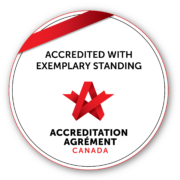Mask Wearing at Menno Place
Can you explain about mask-wearing at Menno Place?
There was a comment about mask wearing and we provided an explanation – here it is for those of you who may have missed it in the other discussion.
The reality of mask wearing is going to be a bit complex at Menno Place as we have varying levels of care on our campus of care. Our requirements for mask wearing are according to the expectations of the BC Public Health Orders and the Fraser Health requirements for Long-Term Care Homes (Menno Home, Menno Hospital) and Assisted Living (Terrace East).
1. In long-term care and assisted living – all social visitors (if you booked using the online calendar) and essential visitors are expected to wear a mask at all times. This includes when you are out on a patio or outside area for your visit. If you enter through the building door or were screened by the Visitation host to have your visit, you are under these Fraser Health orders to keep your mask on at all times. There are other expectations to mitigate risk of COVID transmission to your loved one, the other residents and staff such as being actively screened at entrance.
2. In long-term care and assisted living – no mask wearing by residents. This is not required under any circumstance, including while on isolation. Residents may choose to wear a mask if they wish. This is stated in Fraser Health’s orders.
3. Inside independent living – Primrose Gardens, Terrace West, Pavilion: no mask wearing required by any resident. This is optional for residents and should be evaluated by the resident based on their risk (such as medical issues and vaccination status). We are asking residents to wear a mask when they gather for meals – en route to and from the dining room and when they are not eating. This is because they will encounter so many more people during this activity and the risk of COVID transmission increases. Masks are required by Registered Visitors at all times, including within the apartment suite.
4. The outside spaces of Menno Place alongside the Apartments such as Living Waters Gazebo, patios at Primrose Gardens, Terrace East, Pavilion – masks are not required. Anyone visiting in these areas is guided by the Public Health Orders for outside gatherings. The Public Health Orders remind us to use our layers of protection which may include mask wearing but it is not required. The orders state that up to 10 people can gather in an outside space – do not gather with new groups of people, stick to the same people (see link below). Both independent living residents and assisted living residents make use of these spaces for outside visits.
For Terrace East, (Assisted Living) an outdoor visit is not booked through the social visitor program/online calendar. You may arrange an outside visit with your loved one directly where they meet you outside without you entering the building. If you need to enter the building, you must book an online social visit using the booking calendar. If a resident needs assistance to meet you outside due to their mobility, you must arrange this with Cheryl Dawes, Manager, Community Enrichment – 604.851.4020.
5. Staff must wear masks. All staff are required to wear both mask and goggles when they are within resident spaces in long-term care and assisted living. Why these different rules? The logic here involves the fragility of the residents in these various levels of care. Those in long-term care often have more complex medical issues and are in close proximity to each other most of the time which makes the spread of COVID more likely. Those of us coming in from outside of the building are always the source of COVID exposure. For this reason, ALL efforts are made to reduce the risk when we enter and spend time in the long-term/assisted living resident space.
Those living in Independent Living apartments are living under the same regulations as the rest of us in the public – the Public Health Officer’s restrictions for all British Columbians. These are found here: https://www2.gov.bc.ca/…/con…/covid-19/info/restrictions
The additional layer of protection that Menno Place has put in place for residents in Independent Living is the Registered Visitor program. We are waiting for the residents to have their 2nd dose and also to see the community prevalence reduced before assessing the necessity of this additional layer of protection. Unlike regular apartment buildings in the community, our independent living residents are gathering together for meals and (soon) social activities. These gatherings bring a higher level of risk for COVID transmission. We are mitigating this additional risk with the Registered Visitor program (extremely successful – thank you!). We are also audited by Fraser Health on our infection control protocols in the Independent Living buildings, so we put other measures in place as well including sanitizing stations, enhanced cleaning, etc. that are not required in community apartment buildings. These are some of the differences between an apartment building in the community and our independent living apartments.
Outside gathering restrictions for British Columbians are listed on the link above. It says “continue to use layers of protection and maintain physical distancing”. Those layers involve visiting in a bubble/core household, mask wearing, social distancing, vaccination. We do not supervise the layers that families/friends choose with their loved ones in Independent Living or outside visits for Assisted Living. We expect that visitors who are visiting their loved ones are putting in place layers of safety that will not bring harm. This has proven to be the case as we have not had an instance of a visitor bringing a COVID exposure to residents in Independent Living.
Dr. Bonnie Henry has repeatedly shared that outside is safer than inside – the mask requirement from the PHO is for inside spaces only, such as stores, at this time. It is not a requirement for outside visits.
In summary, there are stricter restrictions for inside visits (versus outside visits) AND there are stricter restrictions for inside visits for residents living in long-term care and assisted living.





